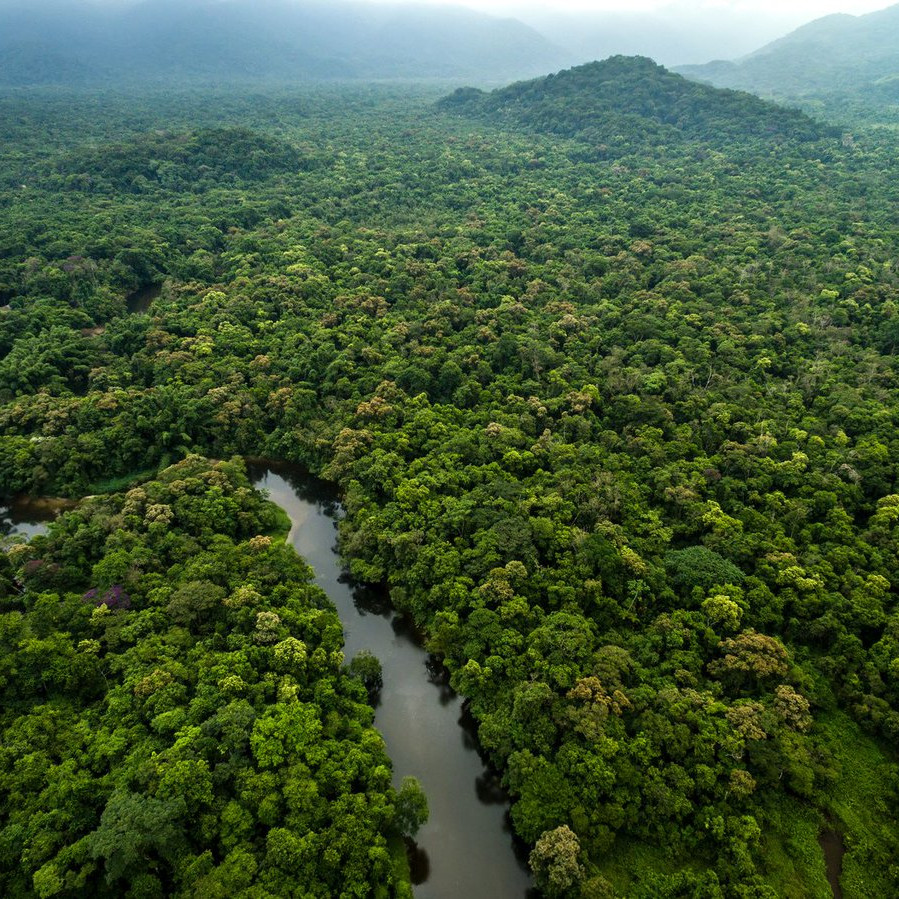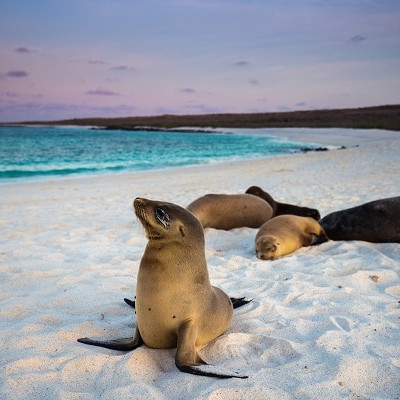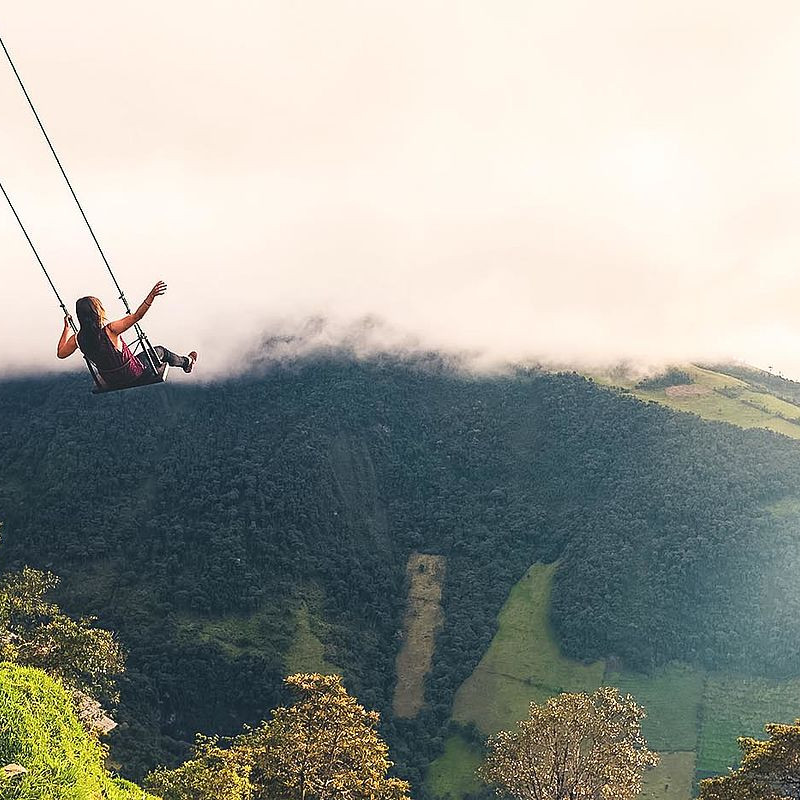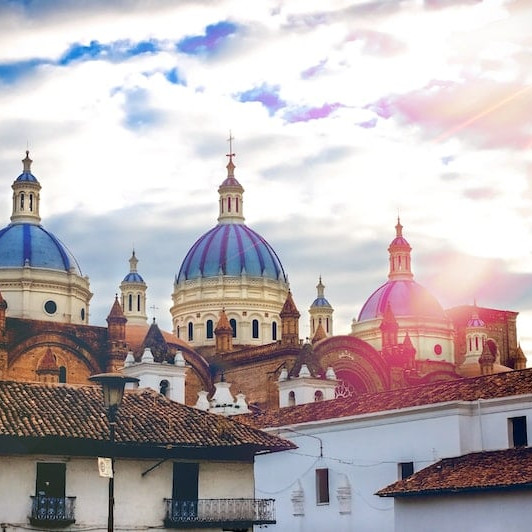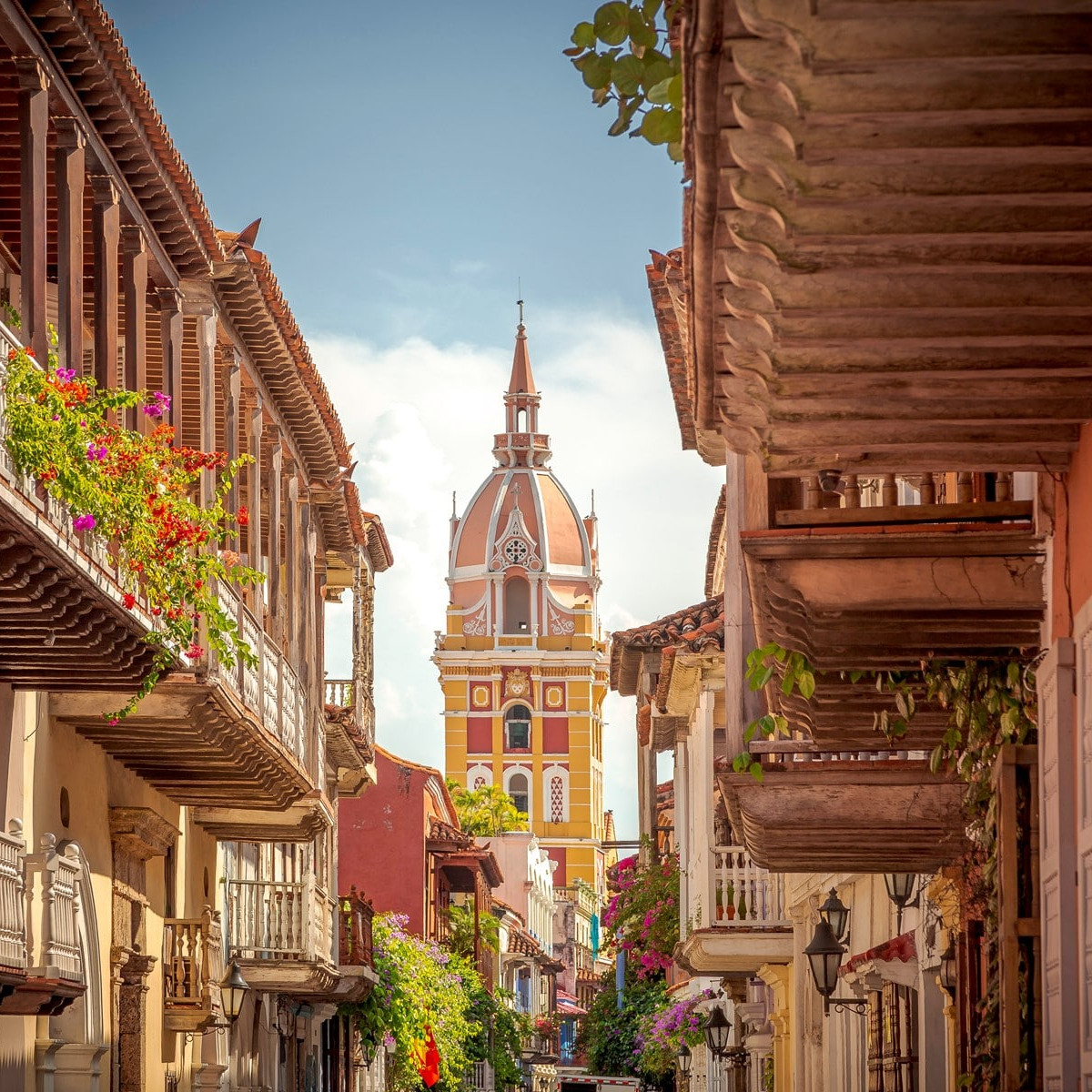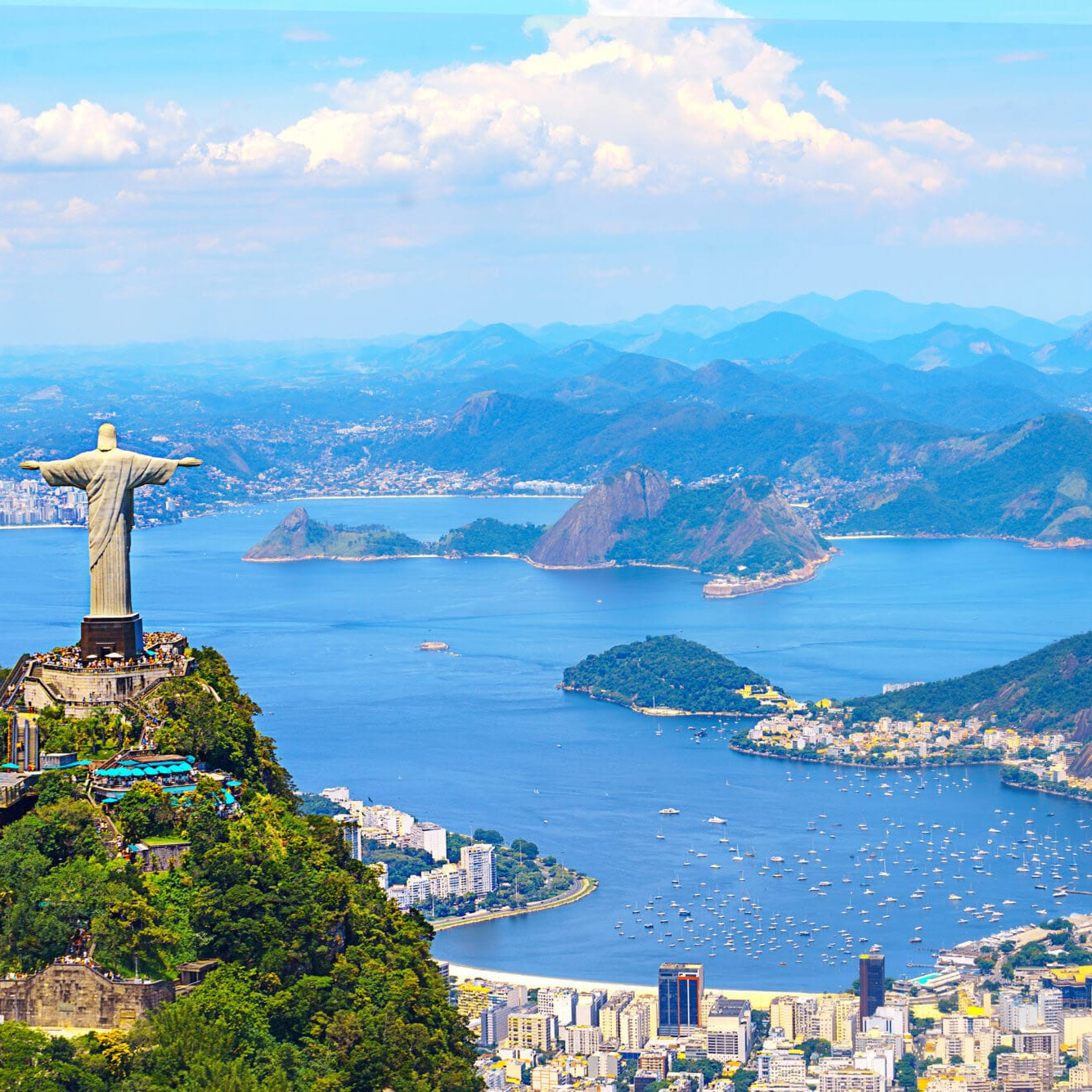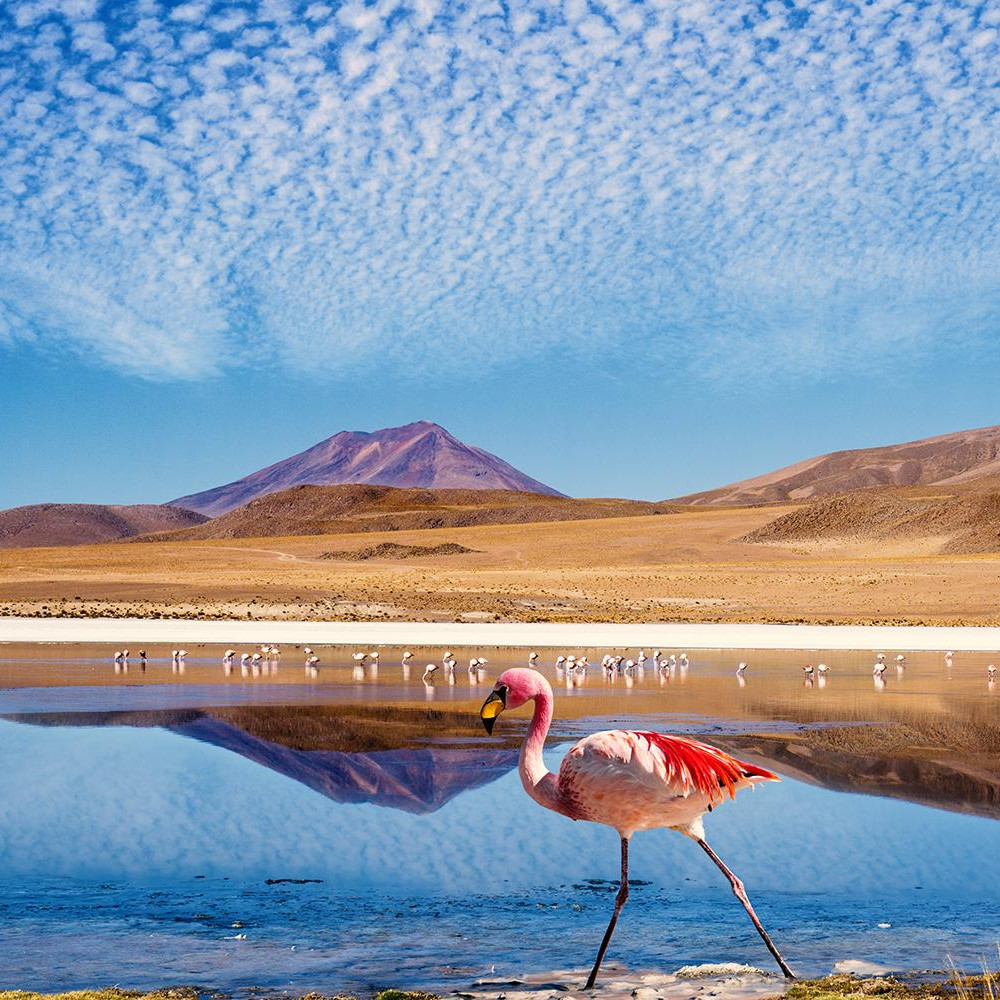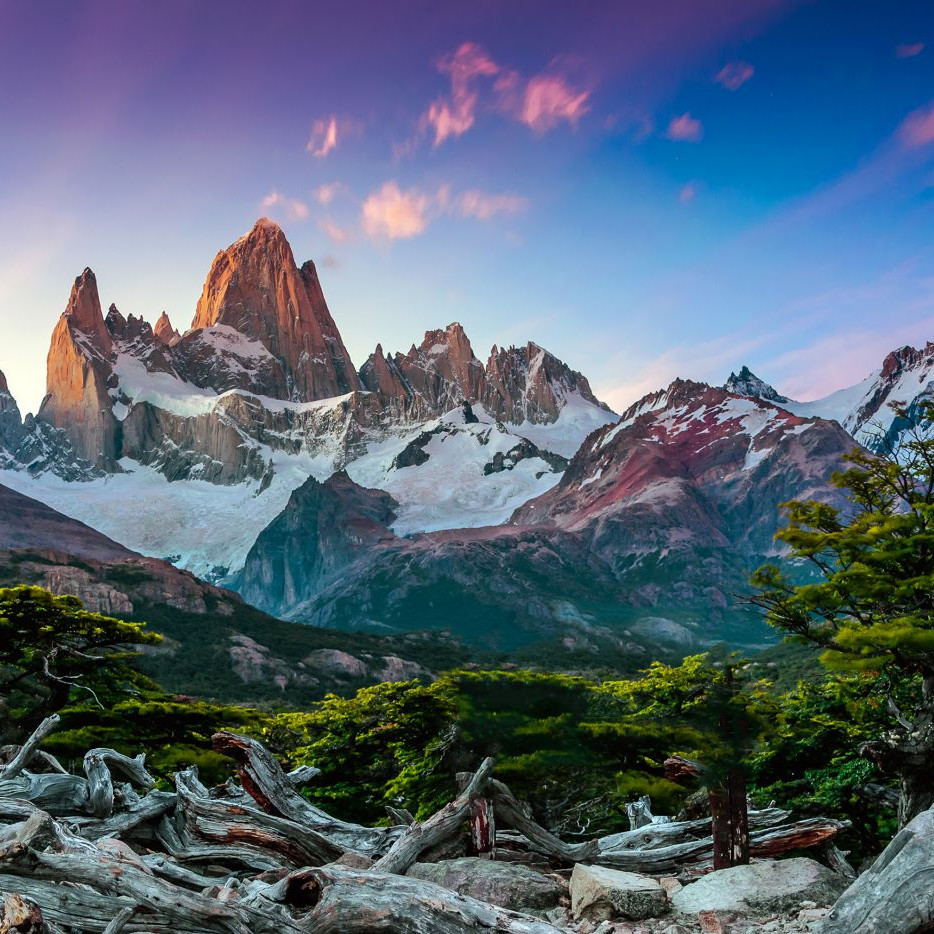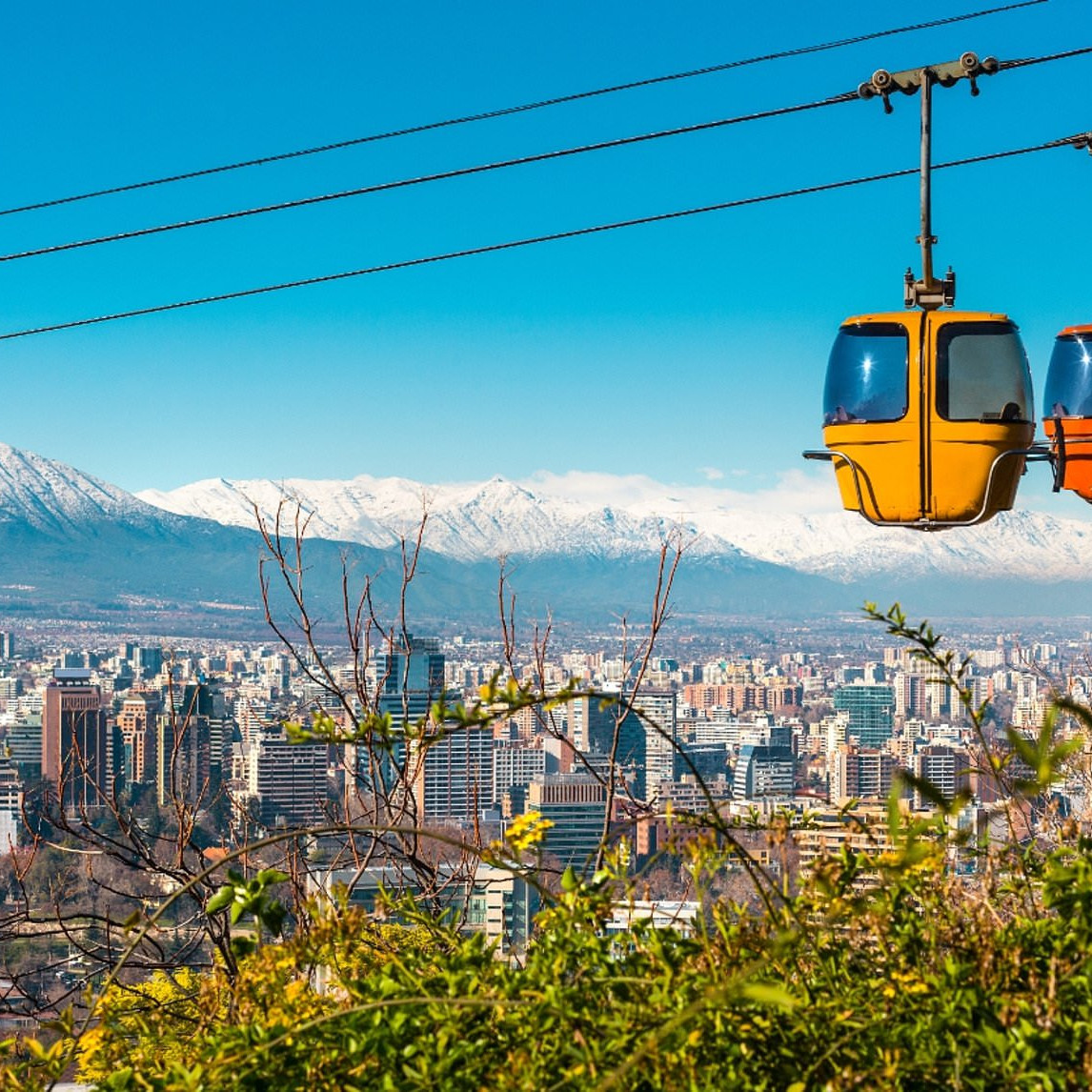Located in the northwestern South America, and known as The land of fire and ice, Ecuador is one of the 17 megadiverse countries in the world and has the most biodiversity per square kilometre of any nation, with amazing landscapes and features to explore. It also boasts a rich cultural heritage, mouth watering food and amazing architecture.
Why Visit Ecuador
BIODIVERSITY & LANDSCAPES
Ecuador is one of the 17 megadiverse countries in the world and has the most biodiversity per square kilometre of any nation, featuring an astounding array of wonders that include many volcanoes, the Amazon rainforest, beautiful beaches and mountains in The Andes.
VOLCANOES
Ecuador is home to over 27 potentially active volcanoes, highlighting the Cotopaxi, the world’s highest active volcano and the Chimborazo Volcano, the point on Earth closest to the sun. The Cotopaxi National Park is one the most important tourist attraction in Ecuador, after the Galapagos Islands.
GASTRONOMY
Ecuador’s cuisine is as diverse as its landscape. Every region (Coast, highlands, Amazon and Galapagos) enjoys different traditional dishes, each of them equally delicious. Soups are a specialty in the highlands, ceviche and heavily seafood-based foods are typical dishes on the coast, and stewed Guanta and Chontacurro are specialties on the Amazon, and wouldn’t be found anywhere else in the country.
CULTURE
Ecuador’s culture is a vibrant blend of indigenous traditions, Spanish colonial influences, and Afro-Ecuadorian heritage. Visitors can immerse themselves in the colorful festivals, lively music, and traditional dances such as the famous “Diablada” or “San Juanito.” Indigenous communities, such as the Otavalo and Saraguro, preserve their customs and craftsmanship, offering visitors a chance to learn about their rich cultural heritage.
ARCHITECTURE & HISTORY
Ecuador enjoys a tumultuous and rich history. Many indigenous cultures lived in what is today Ecuador more than 12,000 years ago. Further on the Incas took over the region and the tribes, and remained there until the 1500s, when the spanish arrived. The first Spaniards landed in northern Ecuador in 1526, and defeated the Incas in 1534. Ecuador’s architecture has seen several influences, as each period has left its remains, and, examples of these cultures can still be found in the country. Several Incan ruins survived and are open for tourist and locals to explore, and spanish colonial architecture can be found in almost every city and town in Ecuador.
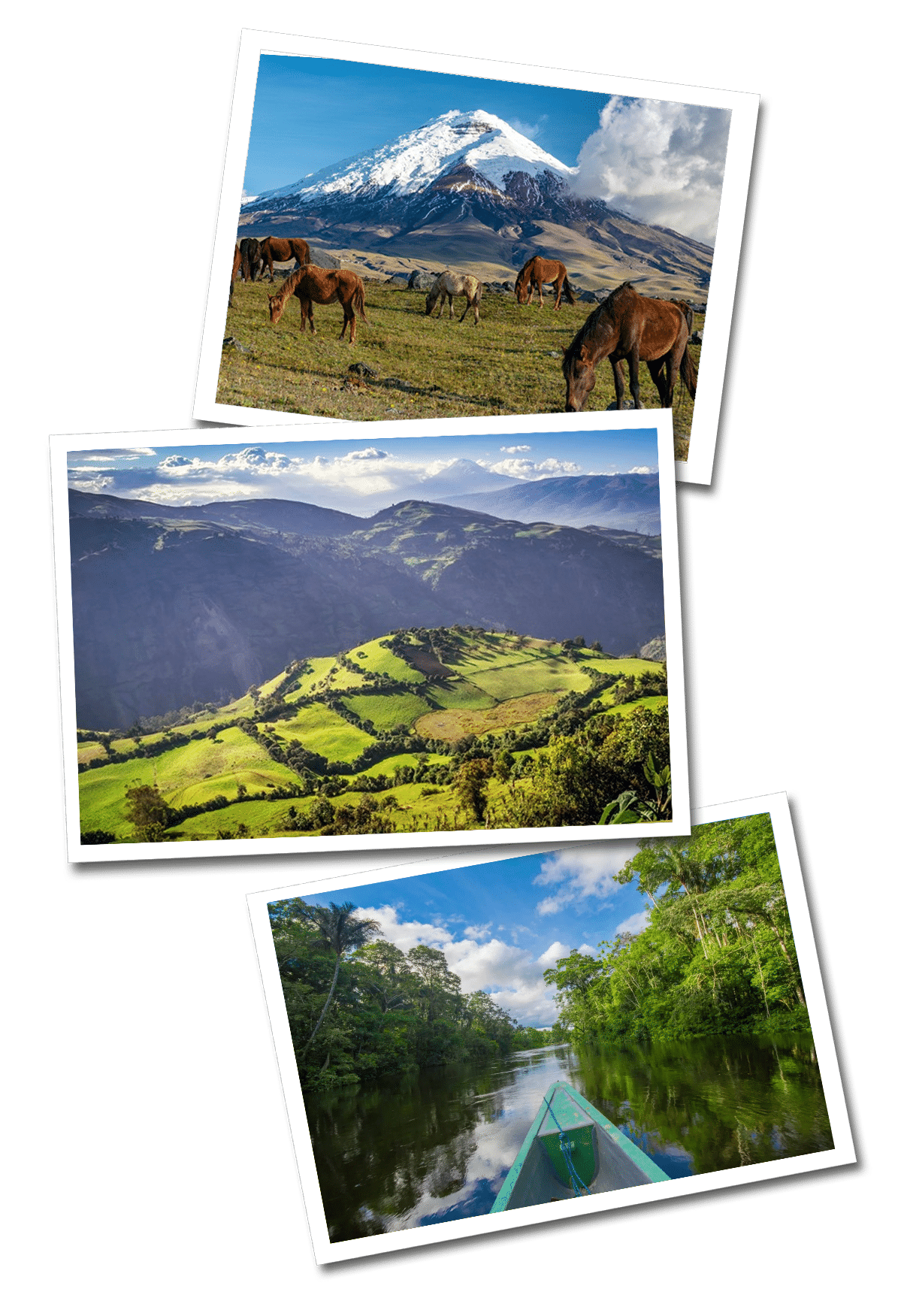
Located in the northwestern South America, and known as The land of fire and ice, Ecuador is one of the 17 megadiverse countries in the world and has the most biodiversity per square kilometre of any nation, with amazing landscapes and features to explore. It also boasts a rich cultural heritage, mouth watering food and amazing architecture.

Why Visit Ecuador
BIODIVERSITY & LANDSCAPES
Ecuador is one of the 17 megadiverse countries in the world and has the most biodiversity per square kilometre of any nation, featuring an astounding array of wonders that include many volcanoes, the Amazon rainforest, beautiful beaches and mountains in The Andes.
VOLCANOES
Ecuador is home to over 27 potentially active volcanoes, highlighting the Cotopaxi, the world’s highest active volcano and the Chimborazo Volcano, the point on Earth closest to the sun. The Cotopaxi National Park is one the most important tourist attraction in Ecuador, after the Galapagos Islands.
GASTRONOMY
Ecuador’s cuisine is as diverse as its landscape. Every region (Coast, highlands, Amazon and Galapagos) enjoys different traditional dishes, each of them equally delicious. Soups are a specialty in the highlands, ceviche and heavily seafood-based foods are typical dishes on the coast, and stewed Guanta and Chontacurro are specialties on the Amazon, and wouldn’t be found anywhere else in the country.
CULTURE
Ecuador’s culture is a vibrant blend of indigenous traditions, Spanish colonial influences, and Afro-Ecuadorian heritage. Visitors can immerse themselves in the colorful festivals, lively music, and traditional dances such as the famous “Diablada” or “San Juanito.” Indigenous communities, such as the Otavalo and Saraguro, preserve their customs and craftsmanship, offering visitors a chance to learn about their rich cultural heritage.
ARCHITECTURE & HISTORY
Ecuador enjoys a tumultuous and rich history. Many indigenous cultures lived in what is today Ecuador more than 12,000 years ago. Further on the Incas took over the region and the tribes, and remained there until the 1500s, when the spanish arrived. The first Spaniards landed in northern Ecuador in 1526, and defeated the Incas in 1534. Ecuador’s architecture has seen several influences, as each period has left its remains, and, examples of these cultures can still be found in the country. Several Incan ruins survived and are open for tourist and locals to explore, and spanish colonial architecture can be found in almost every city and town in Ecuador.
- Name: Republic of Ecuador
- Capital: Quito
- Official Languages: Spanish
- Currency: United States dollar
- Time Zone: UTC−5 / -6
- Name: Republic of Ecuador
- Capital: Quito
- Official Languages: Spanish
- Currency: United States dollar
- Time Zone: UTC−5 / -6
Bucket List
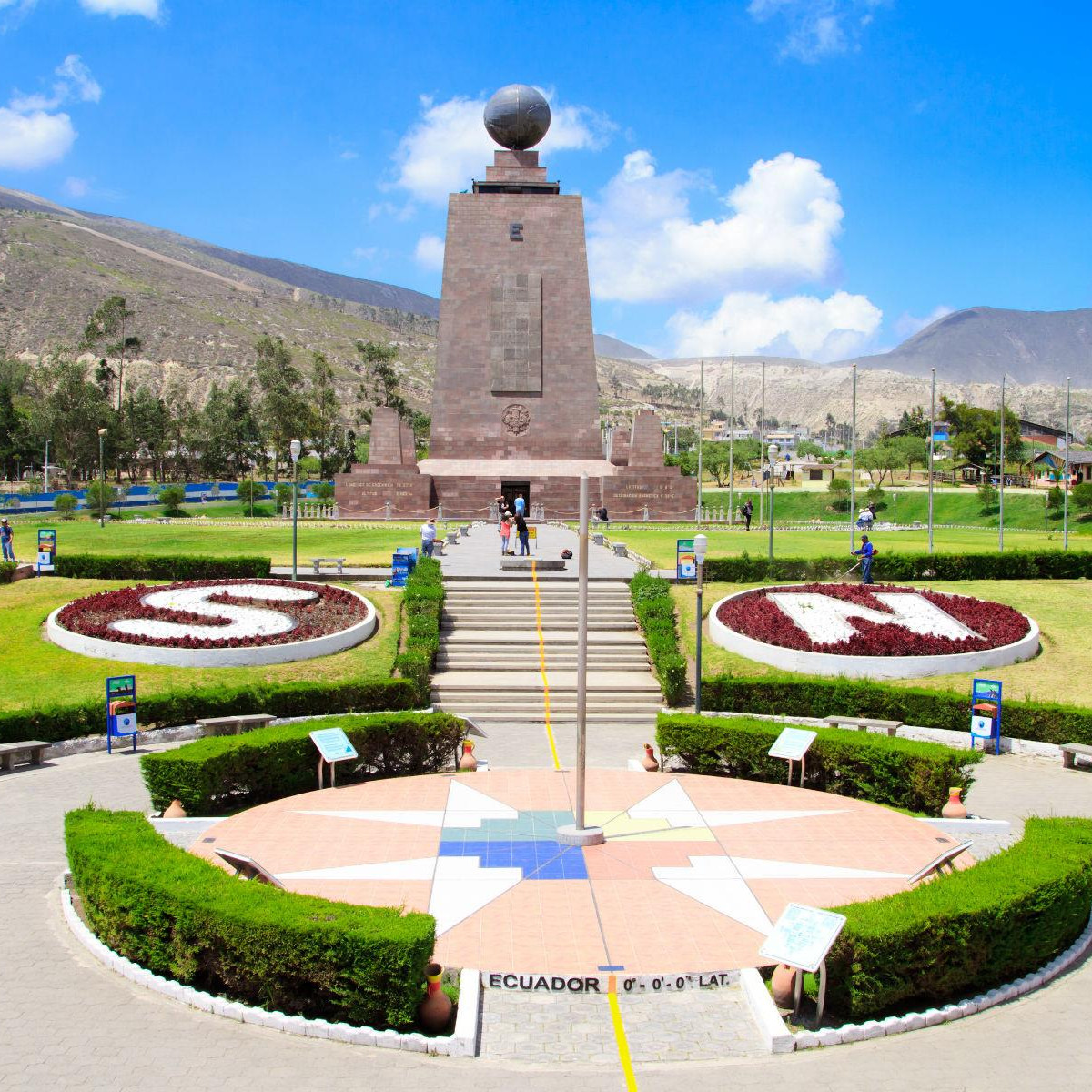
Visit the “Mitad del Mundo“, the Equator line
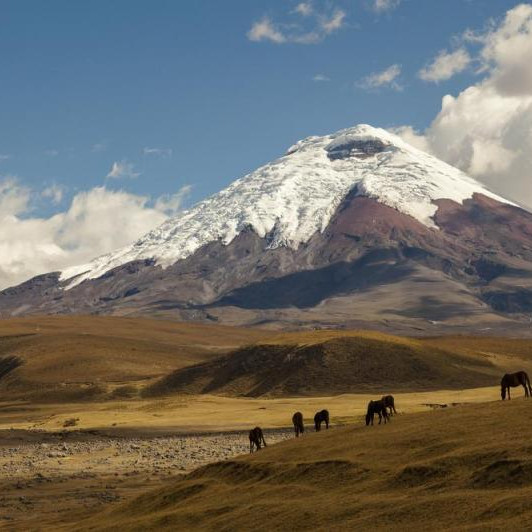
Hike the Cotopaxi Volcano
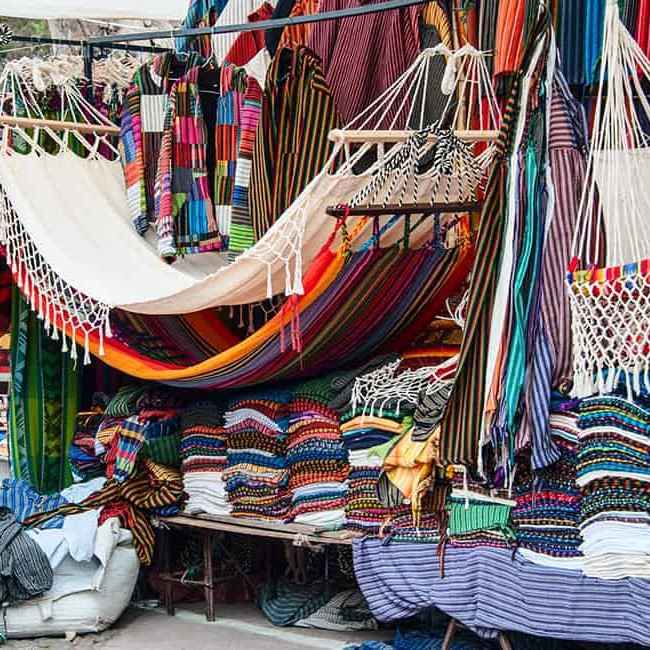
Shop at Otavalo Market
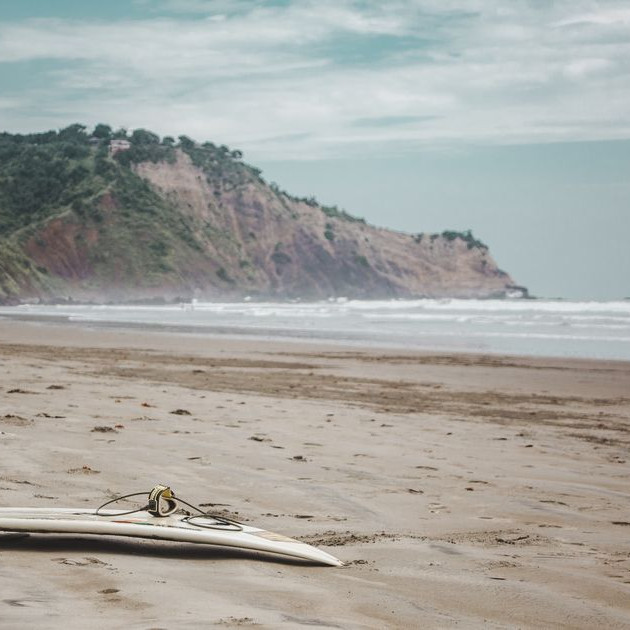
Learn to surf in Montañita
What to expect
LANGUAGE
Spanish is the official language in Ecuador, but Quechua, an Inca language, and 10 other native languages are spoken by the Indian population. English is the most spoken foreign language, especially in big cities and tourist attractions or by younger generations. Still, it will come in handy to learn some basic phrases in Spanish as not everyone will speak english.
ELECTRICITY
In Ecuador the standard voltage is 110 V and the frequency is 60 Hz. That’s the standard voltage in the US, Canada and most South American countries.
CURRENCY
Ecuador uses the USD as its official currency. The currency changed in 2000 after the financial crisis. Foreign currencies are not accepted, but they can be exchange at any bank or withdraw directly from the ATM. Debit and credit cards are widely accepted in Ecuador.
CLIMATE
Ecuador’s climate is as diverse as its landscape. Pretty much every region has a different weather. The temperature is usually colder in the higher altitudes, and warmer along the coast and in Galapagos. Ecuador has two seasons: a wet season and a dry one. It is recommended to research in deep about the region you will be visiting.
SAFETY
Ecuador is relatively safe to visit. Unfortunately, tourist hotspots, restaurants, shops and public transportation are places where petty crime tend to occur. Violent crime varies from area to area, but you would rarely experience it in your visit. It is recommended to exercise caution at all times, just like you would do anywhere else.
How to get around
- Buses: Buses are the most common and affordable mode of transportation in Ecuador. They serve both urban and rural areas, connecting cities, towns, and even remote villages. Major cities have local bus systems, while long-distance buses operate between different regions. Companies like Cruz del Sur, Transportes Ecuador, and Panamericana offer comfortable buses for intercity travel.
- Taxis: Taxis are readily available in cities and towns throughout Ecuador. They are a convenient mode of transportation for shorter distances or when exploring local attractions. In major cities, taxis are usually metered, while in smaller towns, it’s advisable to negotiate the fare before the ride. Using ride-hailing apps like Uber or Cabify is also an option in cities like Quito and Guayaquil.
- Trains: Ecuador boasts scenic train rides that offer breathtaking views of its landscapes. The most famous one is the Nariz del Diablo (Devil’s Nose) train ride, which takes passengers on a thrilling journey down steep Andean slopes. Other train routes include the Tren Crucero, which travels from Quito to Guayaquil, and the Chimbacalle to El Boliche route, offering stunning vistas of the Andean highlands.
- Domestic Flights: For longer distances or to reach the Galapagos Islands, domestic flights are a popular option. Quito and Guayaquil have international airports with connections to major cities within Ecuador. Airlines such as TAME, Avianca, and LATAM operate domestic flights to destinations like Cuenca, Manta, and the Galapagos Islands.
- Ferries: Since Ecuador has a coastal region, ferries are available for traveling to the Galapagos Islands or for exploring the coastal areas. Ferry services operate from mainland Ecuador to the Galapagos Islands, connecting cities like Guayaquil or Manta to Santa Cruz or San Cristobal Islands. Additionally, ferry services are available for crossing the Gulf of Guayaquil and reaching coastal towns.
- Rental Cars: Renting a car provides flexibility and convenience for exploring Ecuador, especially for remote areas or off-the-beaten-path destinations. Major car rental companies have offices in cities and airports. However, it’s essential to consider local driving conditions, road safety, and parking availability, especially in larger cities.
- Motorcycles and Bicycles: Motorcycle and bicycle rentals are available in some tourist areas, offering a unique way to explore Ecuador’s landscapes and rural regions. This mode of transportation is suitable for adventure enthusiasts and those seeking an immersive experience.
Visa Policy & Passports
- Visa-Free Entry: Ecuador allows citizens of numerous countries to enter without a visa for tourism purposes. The following countries are included in the visa-exempt list: all European Union member states, the United States, Canada, Australia, New Zealand, Japan, South Korea, and most South American countries.
- Tourist Visa: Citizens of countries not included in the visa-exempt list are required to obtain a tourist visa before traveling to Ecuador. This includes citizens of China, India, Russia, South Africa, Turkey, the United Arab Emirates, and other countries not mentioned in the visa-exempt list.
- 12-IX Visitor Visa: The 12-IX visitor visa is suitable for tourists who plan to stay in Ecuador for longer periods or engage in specific activities such as volunteer work or language study. This visa is required for citizens of all countries not included in the visa-exempt list or the tourist visa requirement.
- Temporary Residency Visa: Tourists who wish to stay in Ecuador for an extended period or engage in activities like work, study, or starting a business need to apply for a temporary residency visa. The specific requirements and eligible countries can vary, and it is recommended to consult with the nearest Ecuadorian embassy or consulate for detailed information and guidance on the application process.
It’s important to note that visa policies can change, and it is advisable to check the most up-to-date information from the Ecuadorian embassy or consulate in your home country before planning your trip. Furthermore, it is crucial to ensure that your passport is valid for at least six months beyond your intended stay in Ecuador.
SUBSCRIBE!
Are you a globetrotter? Join our platform and get exclusive travel tips, getaways and more!
Colombia
Travel Colombia, a country that has everything to ensure a unforgettable adventure. The country is blessed with an array of landscapes..
Brazil
Travel Brazil, the largest country in both South America and Latin America. It is a fascinating country, filled with warm and hospitable..
Bolivia
Travel Bolivia, home to 40% of all animal and plant species in the world. The country is blessed with an incredible diverse nature, from..
Argentina
Travel Argentina, a country king in diversity of all kinds, offering a variety of features and attractions to please every type of traveler..
Chile
Travel Chile, well known for its wine industry, its incredibly diverse landscape, featuring a…
Brazil
Travel Brazil, the largest country in both South America and Latin America. It is a fascinating…
Bolivia
Travel Bolivia, home to 40% of all animal and plant species in the world. The country is blessed…


